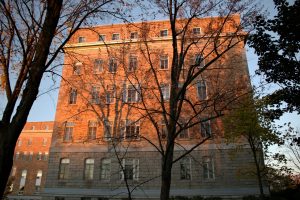Student Loan Forgiveness Traps: Programs That Leave Debt Intact
Student loans are often a necessary evil for many individuals pursuing higher education. The burden of debt that follows graduation can be overwhelming, and as a result, many people turn to student loan forgiveness programs as a solution. These programs promise to alleviate some or all of a borrower’s debt in exchange for meeting certain requirements. However, not all student loan forgiveness programs are created equal. In fact, some programs can actually leave borrowers with more debt than they started with. In this article, we will explore the student loan forgiveness traps that can leave borrowers in a worse financial situation than before.
The Promise of Student Loan Forgiveness
The concept of student loan forgiveness may seem like an ideal solution for those struggling with student loan debt. The premise is simple: meet certain requirements, and a portion or all of your debt will be forgiven. These requirements can range from working in a specific field or for a certain type of employer to making a certain number of payments. However, the key component in any student loan forgiveness program is the promise of having your debt reduced or eliminated. This promise can be alluring, especially for those with a significant amount of student loan debt.
The Reality of Student Loan Forgiveness Traps
Income-Driven Repayment Plans
Income-Driven Repayment (IDR) plans are often touted as a great way to manage student loan debt. These plans allow borrowers to make payments based on their income, rather than the amount they owe. This can make monthly payments more affordable, and after a certain number of years, any remaining debt will be forgiven. However, what many people don’t realize is that forgiven debt through an IDR plan is considered taxable income. This means that borrowers could end up with a hefty tax bill once their debt is forgiven.
Loan Forgiveness for Public Service Employees
The Public Service Loan Forgiveness (PSLF) program is designed to forgive the student loan debt of individuals who work in certain public service fields. After making 120 qualifying payments, the remaining debt is forgiven. However, this program has faced criticism for its high rate of rejection. In fact, as of early 2020, only around 1% of applicants for PSLF had their loans forgiven. This is due to strict eligibility criteria and confusing requirements that often disqualify borrowers from receiving forgiveness.
Debt Consolidation and Refinancing
Debt consolidation and refinancing are other common methods used to manage student loan debt. While both of these options can provide some relief, they may also come with hidden traps. For example, consolidating federal loans into a private loan may result in the loss of certain borrower protections, such as income-driven repayment plans and forgiveness options. Additionally, refinancing can also lead to a longer repayment period, resulting in more interest being paid over time.
Avoiding Student Loan Forgiveness Traps
So, how can borrowers avoid falling into these student loan forgiveness traps? Firstly, it’s essential to thoroughly research any program or plan before enrolling. Make sure you fully understand the eligibility requirements, any potential tax consequences, and the likelihood of approval. It’s also important to carefully consider the long-term implications of any decision, such as consolidating or refinancing loans. Seeking advice from a financial advisor or student loan expert can also be beneficial in making informed decisions.
In Conclusion
Student loan forgiveness programs may seem like a light at the end of the tunnel for those with overwhelming student loan debt. However, it’s crucial to be aware of the potential traps that can result in more debt, rather than relief. Be sure to carefully research and consider all your options before making any decisions. With proper knowledge and planning, you can navigate the student loan forgiveness landscape and avoid falling into any traps that can leave your debt intact.











